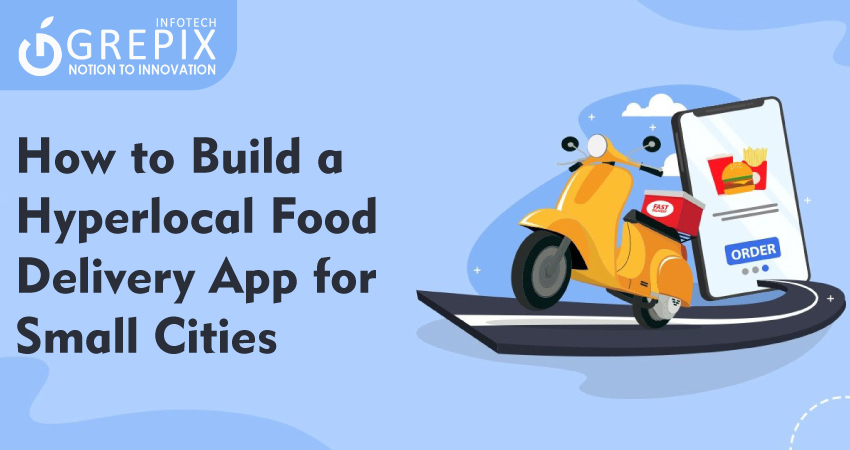How to Build a Hyperlocal Food Delivery App for Small Cities
Building a hyperlocal food app for small cities in 2025 is a transformative opportunity for local businesses and aspiring entrepreneurs. This comprehensive guide will help anyone aiming to launch a hyperlocal food app, a local food delivery clone, or a small city delivery app understand the benefits, challenges, and essential strategies for success.
A niche food app focused on vegan, organic, and healthy meals is the next frontier in food tech, driven by rising consumer awareness and demand for sustainable dining. This guide explores key trends shaping vegan delivery apps and healthy food app development, including hyper-personalization, sustainability, and subscription models. Real-life cases like MonkeyBox and Papaya illustrate business model innovations and operational insights. To dominate Google rankings, learn actionable steps for ideation, monetization, and scaling, while optimizing user experience with smart features. FAQs and strategic CTAs empower readers to turn their food app vision into a scalable, profitable reality.
1The Rise of the Niche Food App
Consumers in 2025 are demanding healthy, vegan, and organic meal options delivered conveniently. Healthy food app development and vegan delivery apps have grown exponentially, reflecting major diet and nutrition trends. The global nutrition apps market is forecast to reach $14 billion in revenue by 2033, with over 200 million downloads and a 45% retention rate.
Specialized Food App Trends
- Hyper-personalization: AI and ML analyze user behavior for tailored recommendations.
- Sustainable delivery: Eco-friendly packaging and carbon-neutral options attract conscious eaters.
- Voice and AR ordering: Voice commands and menu visualization for seamless experiences.
- Subscription models: Recurring revenue streams for loyal customers.
- Expansion into new markets: Rural and underserved areas represent growth opportunities.
2Monetization Models for Vegan & Healthy Apps
Innovative monetization is vital for niche food app success.
| Model | Description | Example |
|---|---|---|
| Freemium | Free with paid premium features | Diet & nutrition apps |
| Subscriptions | Monthly access, perks, member benefits | MonkeyBox school meals |
| In-app purchases | Pay for meals, menu items, or add-ons | Papaya vegan platform |
| Sponsored offers | Discounts/cashback on select healthy options | Just Eat, Uber Eats promotions |
| Referral programs | Incentivize sharing and growth | Food coupon apps |
3Actionable Steps for Healthy Food App Development
The path from ideation to deployment for a healthy food app involves these focused steps:
Market Research & Ideation
- Identify gaps: vegan, organic, gluten-free.
- Analyze demographics; most users are age 25-44.
MVP Design
- Simple UX: Fast ordering, clear restaurant menus.
- Essential features: GPS tracking, dietary preferences.
Tech Stack & Features
- AI-powered recommendations for personalized menus.
- AR menu preview and voice ordering capability.
- Real-time GPS delivery updates.
- Admin panel integration for restaurants and logistics.
Building the Restaurant Network
- Focus on plant-based, organic suppliers.
- Landing pages for each food partner, optimized for conversion.
Monetization and Retention
- Launch with freemium and subscription models.
- Use loyalty programs cashback, exclusive offers.
- Leverage referral codes to boost downloads.
Also Read: "Cloud Kitchens and Food Delivery Apps: A Perfect Match"
4Real-Life Case Studies
MonkeyBox-Healthy School Meal Delivery
MonkeyBox targeted school students in Bangalore, using a subscription-based model for daily vegetarian meals. At its peak, it delivered 3,000 meals daily and had over 60,000 app downloads. MonkeyBox succeeded by partnering with schools and emphasizing nutrition, but faced operational and scaling challenges, offering valuable lessons for startups in healthy food app development.
Papaya-Plant-Based Delivery Platform
Papaya’s vegan delivery app launched in New York, featuring easy onboarding and separate landing pages for each restaurant. Its rapid MVP build leveraged No-Code solutions and integrated GPS tracking, leading to fast user adoption.
Food Delivery Giants’ Vegan Initiatives
Just Eat Takeaway.com, Deliveroo, and Uber Eats have launched temporary vegan campaigns, such as Veganuary offers and plant-based meal discounts. However, only a few firms have committed to ramping up permanent vegan and sustainable options, highlighting the market gap.
5Key Statistics for Healthy Food Apps
- Nutrition app market to reach $14B by 2033 (CAGR 11.5%).
- User retention rates average 45% at 30 days.
- 70% of users report improved eating habits after three months.
- The majority of app users are urban, aged 25-44.
- Top diet apps have 4.5-star user reviews, ensuring high app store ranking.
6SEO Tips & On-Page Strategies
- Use niche food app, vegan delivery app, and healthy food app development naturally 10–15 times.
- Structure with H1, H2, H3 headings and short paragraphs.
- Add bulleted lists, numbered how-tos, and comparison tables.
- FAQ section targeting long-tail queries for higher intent.
7Advanced Features for Niche Food Apps
Personalization
AI helps users select meals aligned with dietary goals or allergies, boosting repeat usage.
Sustainable Delivery
Include features tracking carbon footprint and waste reduction, appealing to conscious consumers.
Integrated Health Tracking
Sync with wearables for calorie, nutrition, and activity stats.
Community Building
Forums, recipe sharing, and user-generated content increase engagement.
Payment Integration
Support for cards, wallets, and loyalty points, essential for seamless transactions.
Conclusion
Building a niche food app targeting vegan delivery or healthy meals in 2025 requires market insight, hyper-personalization, sustainable delivery practices, and innovative monetization. Real-world cases like MonkeyBox and Papaya reveal the power of unique business models and tech-driven user experiences. By developing advanced features which include AR menus, community engagement, and integrated health tracking apps gain a competitive edge.
FAQs
1. What makes a niche food app successful?
Success depends on hyper-personalization, reliable delivery, and a focus on specific dietary needs such as vegan or organic meals.
2. How do I monetize a vegan delivery app?
Utilize a mix of freemium access, subscriptions, in-app purchases, and sponsored health food offers.
3. Are users willing to pay extra for healthy food delivery?
Yes, as subscriptions and loyalty perks drive high retention; 45% of users remain active after 30 days.
4. Which features should I prioritize first?
App essentials are easy ordering, menu AR/voice, GPS tracking, and dietary filters.
5. How can my app stand out in search rankings?
Optimize with SEO: frequent keywords, engaging headings, FAQs, fast load speed, and authentic reviews.
Launch your vision with our mobile app development company, where innovation meets excellence to create cutting edge mobile solutions.







